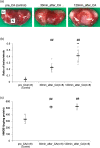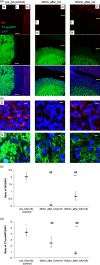The evaluation of pituitary damage associated with cardiac arrest: An experimental rodent model
- PMID: 33436714
- PMCID: PMC7804952
- DOI: 10.1038/s41598-020-79780-3
The evaluation of pituitary damage associated with cardiac arrest: An experimental rodent model
Abstract
The pituitary gland plays an important endocrinal role, however its damage after cardiac arrest (CA) has not been well elucidated. The aim of this study was to determine a pituitary gland damage induced by CA. Rats were subjected to 10-min asphyxia and cardiopulmonary resuscitation (CPR). Immunohistochemistry and ELISA assays were used to evaluate the pituitary damage and endocrine function. Samples were collected at pre-CA, and 30 and 120 min after cardio pulmonary resuscitation. Triphenyltetrazolium chloride (TTC) staining demonstrated the expansion of the pituitary damage over time. There was phenotypic validity between the pars distalis and nervosa. Both CT-proAVP (pars nervosa hormone) and GH/IGF-1 (pars distalis hormone) decreased over time, and a different expression pattern corresponding to the damaged areas was noted (CT-proAVP, 30.2 ± 6.2, 31.5 ± 5.9, and 16.3 ± 7.6 pg/mg protein, p < 0.01; GH/IGF-1, 2.63 ± 0.61, 0.62 ± 0.36, and 2.01 ± 0.41 ng/mg protein, p < 0.01 respectively). Similarly, the expression pattern between these hormones in the end-organ systems showed phenotypic validity. Plasma CT-proAVP (r = 0.771, p = 0.025) and IGF-1 (r = -0.775, p = 0.024) demonstrated a strong correlation with TTC staining area. Our data suggested that CA induces pathological and functional damage to the pituitary gland.
Conflict of interest statement
The authors declare no competing interests.
Figures






References
Publication types
MeSH terms
Substances
LinkOut - more resources
Full Text Sources
Other Literature Sources
Medical
Miscellaneous

